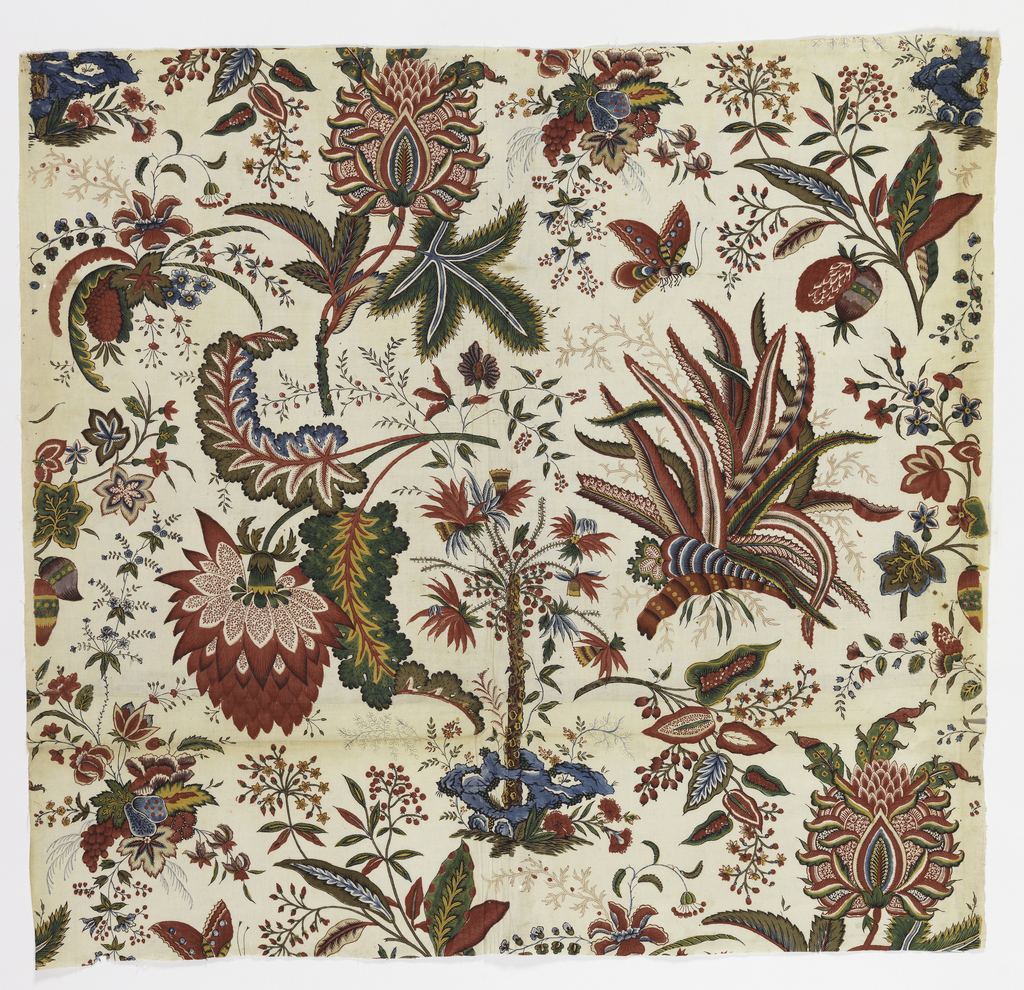During a routine trade trip to Pondicherry India in 1735, French naval officer Antoine de Beaulieu was both enamored and mystified by the Indians’ techniques for dyeing cloth. He endeavored to meticulously record each of the eleven distinct steps, including a sample of fabric at every stage of the process. His book was published in 1760, and was invaluable in disseminating the necessary technical knowledge for Europeans to produce their own imitations of the coveted cloth.
Chintz, or chitte, which comes from the Sankscrit word for “speckled”, originating in Western India and is a term used to describe hand-painted or printed cloth, usually used for clothing and interior furnishings. With trade routes flourishing between Europe and India by the end of the 16th century, Indian chintz was sold in Parisian marketplaces as early as 1658.
The French were crazy about chintz. Lighter in weight than wool, and more practical to clean than silk, the painted cotton fabric inspired much delight. However, in the 17th century the beloved imported fabric became the scapegoat for existing economic difficulties. Mill owners were experiencing grave challenges and competition due to the fashion for foreign goods. In 1686 the French Royal Council of State declared it illegal to import painted cotton fabrics from India, nor was the domestic production of imitation chintz admissible. Despite the fact that the repercussions for breaking the law were serious – they even threatened death – there was a great deal of smuggling taking place. Madame de Pompadour famously continued to dress in Indian chintz and calico, lavishly decorating her chateau with the brightly colored indienne cloth. Fortunately, the French eventually lifted the law in 1752.
This textile, “Fleurs Tropicales et Palmiers” or Tropical Flowers and Palm Trees, is a fine example of a block-printed woven cotton textile – a French imitation of the original hand-painted cloth from India. It is attributed to Oberkampf, a well-known textile manufactory from Jouy-en-Josas, France.
Although more mechanized than the Indian hand-painted versions, block printing was still a time-consuming and labor-intensive process. First, the cotton cloth was purged of extraneous substances such as oil and grease, and left to dry for several days. They used mordants – substances like aluminum or tannic acid – to produce colorfast dyes, ensuring that the fabrics remain saturated in bright color. Woodblocks were carefully carved and applied with distinct dyes, and then they were applied one-by-one to the cloth.
Fleurs Tropicales et Palmiers has 9 colors and required four sets of woodblocks. The yellow and blues were applied by brush on the plain weave cotton foundation, and the resist dye technique was most likely employed to achieve the white details in the large crimson flower, for example. Typical of printed cotton fabric of the time, the pattern features exotic plants like aloe and palm trees, as well as butterflies and brightly colored flora. Set flat atop a white background, the print is largely two dimensional, but there is subtle shading on the plants that demonstrate an attempt to render depth. Overall, the pattern is lively and visually engaging. Chintz-inspired textiles continue to be loved and admired even today.
